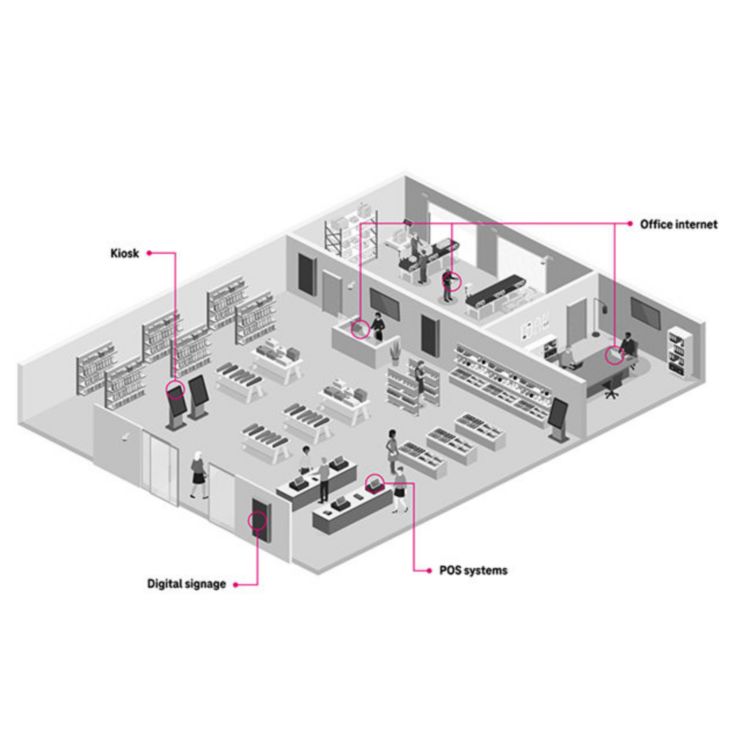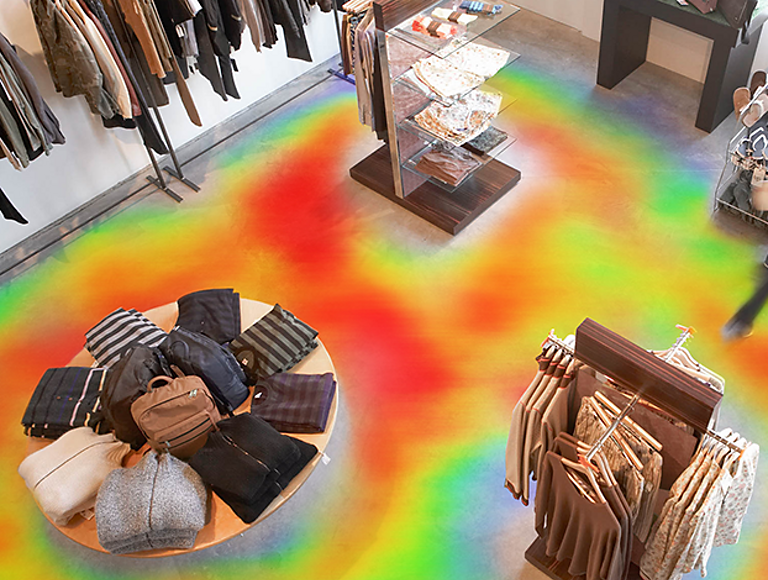Powering a modern shopping experience.
Today, 5G can help retailers remain competitive by enabling the latest point-of-sale technologies, customer data analytics, inventory and supply-chain management dashboards, and more.
The 5G retail era—what some have dubbed retail’s “e-volution,” where in-person and digital shopping are blended together in innovative ways—is here.
Fixed wireless access extends 5G speed and capacity into rural stores.

5G can transform the retail experience for both merchants and their customers. At
5G fixed wireless access can provide high-speed connectivity for everything from the self-service kiosks used by customers to the office internet service required by store managers. With 5G, data can be analyzed in near real-time, allowing retailers to offer on-the-spot deals that can be sent to a customer’s phone or synced with intelligent point-of-sale technologies. Interactive displays can change with each customer, triggered by the customer’s mobile device and based on their shopping history.
Machine-to-machine communications can automate inventory management and allow for supply chain optimization. In addition, 5G can facilitate automated checkout and payment, enabling customers to grab what they want and leave without scanning barcodes manually or tapping or swiping a credit or debit card.
Magic mirrors and endless aisles are made possible by 5G connectivity.
5G’s speed and capacity mean retailers can deliver an enhanced shopping experience. That includes interactive services, which are the future of in-person retail. Among the more compelling innovations: magic mirrors.
For more than a decade, retailers have been working to employ augmented reality (AR) so shoppers can virtually try on clothes and accessories. The impressive speed and capacity of 5G can bring retailers closer to that reality, which bodes well for store operators eager to get more feet walking their aisles. A survey of more than 1,000 consumers found that 85 percent were somewhat or very excited about AR’s potential impact on retail.
Whether in a metropolitan or rural store, a magic mirror in a dressing room or shopping aisle will let customers try on garments of different colors, sizes, and styles or sample lipsticks and blush. If a product isn’t in stock, 5G can enable “endless aisles”—a touchpad that connects customers to a store’s warehouses and lets them order the item they want.
The shopping experience can be visually enhanced in other ways. Digital signage will run faster with 5G. And social feeds featuring favorable customer reviews can be streamed to in-store displays, keeping shoppers interested and engaged.
Heat mapping helps store managers optimize the customer experience—and in-store sales.
Heat mapping gives retailers a digital picture of which parts of their store are busy, and when.
Here’s how it works: Heat-mapping sensors drive analytics that can be used by a store’s buyers and merchandising team to determine ideal product placement. These analytics can also provide insights into customer shopping behavior and help the retailer remodel stores in a more cost-effective manner, selecting the key product offerings that drive foot traffic and engagement.
5G can also provide the bandwidth and connectivity needed to support video analytics, contributing to an improved experience—for both customers and employees—in other ways. For example, cameras can be used as a safety precaution for intrusion detection—to send an alert if someone enters a restricted area—or to detect an object, such as a package or piece of luggage, that's left unattended.

Retail heat mapping & 5G: Optimizing space, preventing loss, and increasing sales.
Seamless experiences to engage new demographics.
5G may also help accommodate the changing demographics of shoppers. With 5G, retailers can deliver the kind of immersive, interactive experiences that younger, more connected customers expect.
The low latency and increased capacity of 5G can power emerging technologies, such as augmented reality (AR) and virtual reality (VR), that enhance in-person shopping, and that can complement new and improved online retail offerings.
With these and other 5G-enabled advances, retail is getting closer to unified commerce—a seamless, integrated shopping experience across channels. That means customers walk out of the store happier with their experience—and with merchandise in hand.
5G: Capable device required; coverage not available in some areas. Some uses may require certain plan or feature; see
